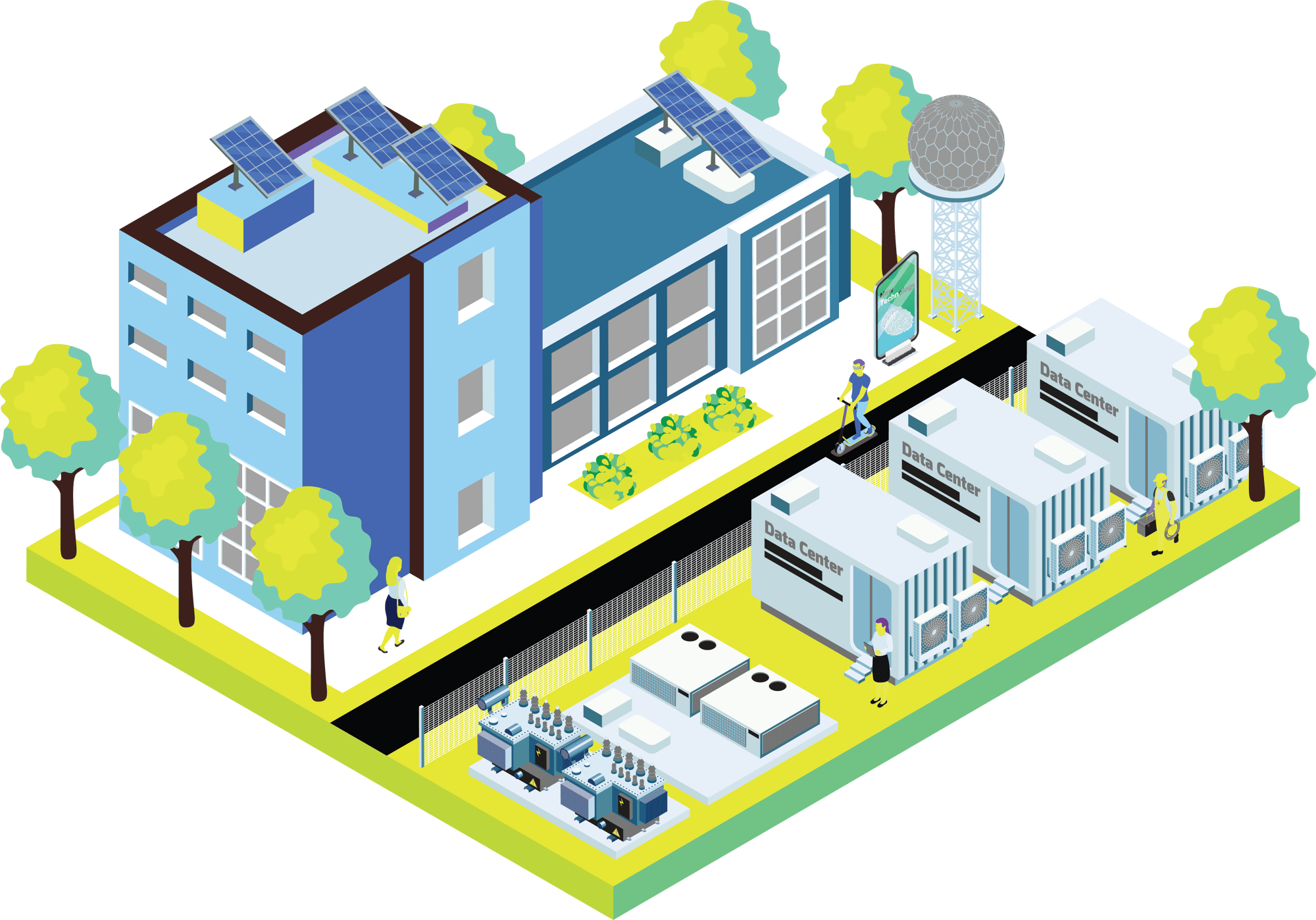
Distributed Capacity Procurement (DCP) is a groundbreaking approach that transforms the energy sector by building upon the success of virtual power plants (VPPs) to deploy critical capacity faster and more efficiently. As utilities, energy brands, and commercial real estate owners seek innovative solutions to embrace change and transform buildings into active grid participants, DCP has emerged as a game-changing strategy that unlocks the full potential of distributed energy resources (DERs).
The Rise of Virtual Power Plants
Virtual Power Plants have already proven their value in the energy market by aggregating and optimizing DERs such as battery storage, backup generation, solar generation, and building energy efficiency measures. VPPs offer a range of benefits, including:
-
Reducing grid operating costs and providing ancillary services
-
Adjusting consumption patterns to balance supply and demand
-
Selling excess energy and participating in energy markets for revenue
-
Collaborating with grid operators for seamless integration and enhanced grid stability
The U.S. Department of Energy estimates that VPPs could reduce peak demand in the United States by 60 GW by 2030, with the potential to reach 80 to 160 GW. However, VPPs still face challenges, such as the need for standardization, simplified enrollment, and integration into utility planning and wholesale markets.
Distributed Capacity Procurement: Taking VPPs to the Next Level
DCP takes the VPP model to new heights by placing the utility as the wholesale purchaser of DERs to serve specific grid needs. By marrying utility planning processes with DER deployment, DCP creates new capacity at an unprecedented speed and scale. Utilities, with their deep understanding of grid needs, can strategically deploy customer-sited generation and storage as grid assets based on their value to the grid, alleviating grid congestion, accelerating the pace of new capacity, lowering transmission and distribution (T&D) costs, and unlocking grid value in ways that third parties have not.
The DCP model offers clear value for the grid while alleviating capacity challenges across load pockets. Utilities are uniquely positioned to spearhead the deployment of DERs at an unprecedented scale, strategically placing assets where the grid needs them most, unlocking the highest total value for society while accelerating the speed and scale of deployment.
Benefits of DCP for Vendors, Developers, and OEMs
DCP presents significant opportunities for vendors, developers, and original equipment manufacturers (OEMs) in the energy sector. By fostering a competitive ecosystem of local vendors and suppliers, DCP programs ensure that the deployment of DERs is not only cost-effective but also aligned with labor, safety, and cybersecurity standards. This collaborative approach recognizes the inherent value of diverse stakeholders while harnessing the collective power of the utility industry to drive transformative change.
Vendors and developers can benefit greatly from participating in DCP programs:
-
Market Stability: Utility-led DCP programs offer long-term contracts and reliable payment structures, mitigating financial risk for vendors and developers.
-
Scalability: DCP enables vendors and developers to scale their operations and benefit from economies of scale, as utilities deploy DERs at an unprecedented pace.
-
Innovation Opportunities: The DCP model encourages innovation and the development of new technologies and business models, as vendors and developers adapt to meet the specific needs of utility-led DER deployment.
-
Regulatory Support: Utility-managed VPPs and DCP programs have shown higher success rates due to robust infrastructure and better coordination with regulators and policymakers.
OEMs can capitalize on the growing market for distributed energy technologies, developing innovative solutions that meet the specific needs of DCP programs. By partnering with utilities and participating in DCP initiatives, vendors, developers, and OEMs can position themselves at the forefront of the energy transition, contributing to the creation of a more resilient, sustainable, and cost-effective grid.
Conclusion
Distributed Capacity Procurement represents a paradigm shift in the energy sector, empowering utilities to leverage the full potential of distributed energy resources to create a more resilient, sustainable, and cost-effective grid. By marrying utility planning processes with DER deployment, DCP accelerates the pace of new capacity, lowers costs, and unlocks grid value in unprecedented ways. As the energy landscape continues to evolve, DCP will play a crucial role in driving the transition to a cleaner, more distributed energy future, offering significant opportunities for utilities, vendors, developers, and OEMs alike.
Ready to get started on your DCP journey now?